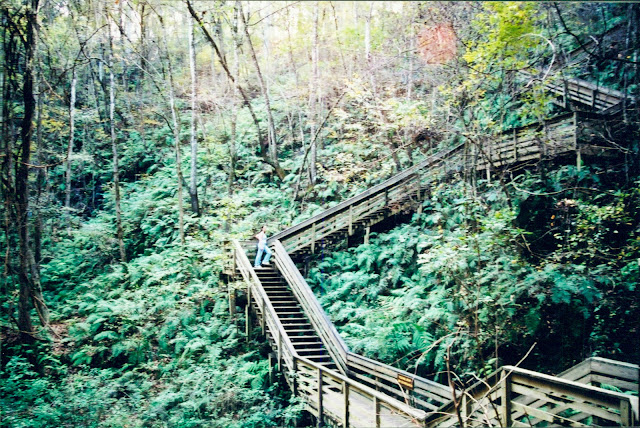 |
| Devil's Millhopper - Photo Scan |
November 26, 2003. Devil's Millhopper, near Gainesville, Florida.
Going through some of my
old photos that I had scanned a couple years ago, I came across this shot taken almost a decade ago at
Devil's Millhopper Geological State Park near Gainesville, Florida.
The Devil's Millhopper is a deep sinkhole a couple hours north of Orlando. It's not on many tourist maps, but it should be. The special conditions here give it a rainforest appearance year-round, and it hosts some unusual plant species that aren't normally found in Florida.
It's not a street shot, and it's not a particularly clear shot. It does make me want to go back to the Millhopper to shoot again sometime soon, and it makes me appreciate just how much I learned using that old Pentax ZX-7 film camera, not knowing whether my shot was good until I got my prints back from the lab.
Pentax ZX-7 35mm film, unknown settings. Print scanned using a Kodak s1220 Photo Scanner. Scanned photo had mild processing done in LR 2 to compensate for fading over time.















